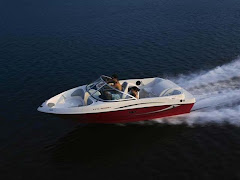The 'keel', as it is known, is the main part of the skeletal 'structure' of a boat. The term even has more general uses - one being 'keel' used for describing the breastbone of a bird (quite similar in shape to the keel used in boats) and the other being a pair of united petals of a flower or plant eg. a pea plant.

Getting back to keels more relevant to us - it must be mentioned that there are 2 kinds of keels that we tend to hear about ie. a Structural Keel and a Hydrodynamic Keel. The functions of these overlap.
Structural Keels
A structural keel is a large beam which the hull of a ship is built around. The keel runs in the middle of the ship, from the bow to the stern, and serves as the foundation or spine of the structure, providing the major source of structural strength of the hull. The keel is generally the first part of a ship's hull to be constructed, and laying the keel, or placing the keel in the cradle in which the ship will be built, is often a momentous event in a ship's construction - so much so that the event is often marked with a ceremony, and the term lay the keel has entered the language as a phrase meaning the beginning of any significant undertaking.
The keel contributes substantially to the longitudinal strength and effectively local loading caused when docking the ship. The most common type of keel is the 'flat plate keel', and this is fitted in the majority of ocean-going ship and other vessels. A form of keel found on smaller vessels is the bar keel. The bar keel may be fitted in trawlers, tugs,etc.. and this is also found in smaller ferries.
Hydrodynamic Keels
The keel surface on the bottom of the hull gives the ship greater directional control and stability. In non sailing hulls, the keel helps the hull to move forward, rather than slipping to the side. In traditional boat building, this is provided by the structural keel, which projects from the bottom of the hull along most or all of its length. In modern construction the bar keel or flat-plate keel perform the same function.
In sailboats, keels use the forward motion of the boat to generate lift to counter the lateral force from the sails. Sailboats have much larger keels than non sailing hulls. Keels are different from centerboards and other types of foils in that keels are made of heavy materials to provide ballast to stabilize the boat. Keels may be fixed, or non-movable, or they may retract to allow sailing in shallower waters. Retracting keels may pivot (a swing keel) or slide upwards to retract, and are usually retracted with a winch due to the ballast. Since the keel provides far more stability when lowered than when retracted (due to the greater moment arm involved) the amount of sail carried is generally reduced when sailing with the keel retracted.
As shown in the image above, (image courtesy - www.britannica.com) there are several types of fixed keels including: full keels, fin keels, winged keels, bulb keels, and twin keels or bilge keels among other designs.
In short, a keel is that main part of the structure of a boat or a ship, that not only holds it together but also provides stability and ensures that it sails straight ahead.
